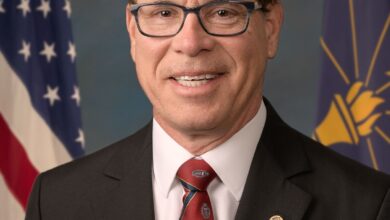
Making STEM More Accessible for Future Generations
Science, technology, engineering, and mathematics (STEM) skills are essential in today’s job market. As the demand for automated jobs slows down, an estimated 80% of fasting-growing careers depend on STEM expertise. But while the push for STEM education is undoubtedly rising, U.S. employers still struggle to fill vacancies for the growing numbers of STEM-based positions.
Looking at the workforce hints at what’s causing this issue. Current STEM workers are 65% male and 70% white. This overrepresentation decreases interest in the field within diverse communities, which often struggle to receive the resources needed to develop skills.
We’ll explore what steps can be taken to make the field more accessible for future generations.
Invest in Public and Equitable Education
Students develop their first skills and perception of the field in childhood. As early as preschool, educators can spark interest in STEM studies by helping kids practice problem-solving and creativity or taking them on interactive field trips.
But educators can’t do so alone. Schools and governments must invest in positive learning environments to ensure students get adequate support, especially in public schools.
When government leaders invest in privatized education instead, it locks minority students in generational poverty and reduces their access to STEM education. Non-white students make up the majority of public school students. On the flip side, 43% of private schools are considered virtually all-white, with 10% or fewer students being students of color.
While investing in public education, schools and governments should also support a personalized approach to STEM education. For example, minority and low-income students — who already struggle to access quality education — are at greater risk for poor performance in virtual classrooms. Prioritizing in-person learning for these disadvantaged students can help reduce inequities that bar them from the field later in life.
A recent bill supporting STEM education in rural communities exemplifies an equitable approach to legislation. This legislation could funnel more resources for teacher training and pair online STEM education with hands-on apprenticeships in struggling communities.
Avoid Perpetuating Stereotypes
Students learn stereotypes from a young age through interactions with parents, teachers, media, and more. Building a strong workforce requires adults to tackle stereotypes about who the field is actually for.
Though white men may fill most jobs right now — and students may notice it — parents and educators can show all children equal enthusiasm and support as they explore activities and dream about their future careers.
Regardless of their backgrounds or abilities, children should feel empowered and excited to excel in STEM.
Offer Financial Resources for Higher Education
STEM education in early childhood is critical for developing interest in and core skills for the field. But high school and college students interested in careers often cannot access the education and training required for existing roles. In addition, financial barriers are a considerable barrier contributing to the skills gap in our workforce today.
Colleges, universities, and vocational schools can increase STEM accessibility by offering bookmarked financial aid for disadvantaged demographics and communities.
Businesses and organizations can invest in students, too. It can be a mutually beneficial move for companies that need more talent. Offering paid engineering internships, for example, can help businesses receive support and potentially hireable talent, all while helping low-income students gain experience and career training.
Create Inclusive Company Policies
Business leaders can inspire future generations to pursue STEM by creating and enforcing more inclusive company policies. Building a diverse workforce — with diverse talent at all levels of the organization — in which each individual is equally respected is attractive to Gen Z and young millennial workers.
Plus, when underprivileged students (including girls and ethnically diverse students) see people like them in STEM careers, it helps them envision themselves in those positions. As a result, STEM careers will feel much more accessible and less risky, making STEM degrees worthwhile.
Inclusive policies can also help interns from diverse backgrounds feel much more welcome and valued in an organization. As a result, they’ll be driven to learn and contribute more and continue their career paths in STEM.
Beyond just implementing policies, human resources teams, and college recruiters can actively reach out to more diverse students.
Build the STEM Workforce of the Future
STEM workers are becoming an increasingly vital part of the U.S. workforce. However, the number of STEM professionals isn’t rising as fast as the number of careers. Reducing this skills gap requires schools, governments, companies, and more to invest in students who have historically been excluded from the field. As disadvantaged students gain the resources and the motivation to pursue STEM, a talented and diverse workforce will rise.






